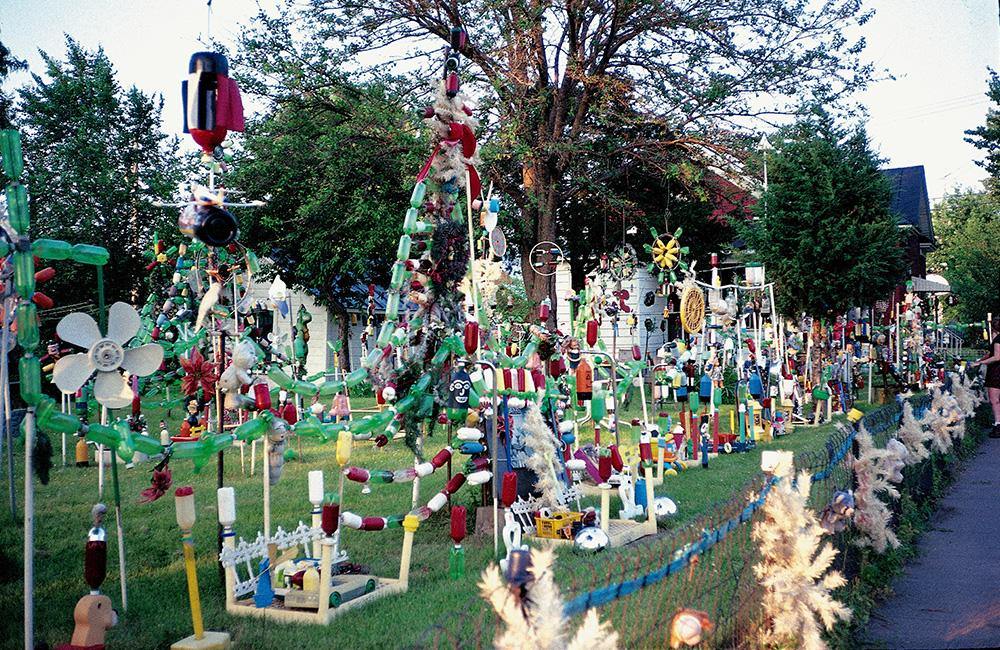First published: Spring 2005
In the city of La Crosse the voluptuous landscape of central western Wisconsin rolls to a halt at the Mississippi River’s edge. Five blocks east of the river the visual landscape of an ordinary, slightly run down neighbourhood bursts abruptly into a field of colour and motion in the hand-made, breeze-driven garden of Paul J. Hefti.

Radiating out into the yard from the modest, Italianate red brick house at 515 Adams Street where Hefti was born in 1912, the garden is a panorama of twirling tableaux, individual sculptures, and things hanging from trees and fences, all made primarily out of plastic bottles and other discarded objects: dolls, stuffed toys, advertising ephemera and more plastic bottles. Plastic bottles are strung together in various arrangements, most painted with simple designs or smiling or frowning faces in splashes of red, white and blue. Bottles are sliced up and made into odd creatures, quizzical faces, flowers, sunbursts, birdhouses and other objects that hang from trees and wires, spinning erratically in any passing breeze.
Paul Hefti’s biography, what we know of it, is as spare as his garden is elaborate. He is a single man with a simple sweet personality. He worked for 45 years at the La Crosse Paper and Box Company and retired in 1981. His artistic consciousness seems to have come into bloom in about 1985, when he began ornamenting his garden. On his daily bicycle trips around La Crosse to market, Hefti found bottles and objects for his garden along the way. Encouraged by visitors, he kept adding to his showplace, thus seducing more visitors, a partial motivation for a man who has led a relatively solitary life.
Although people often refer to the yard as ‘Pop art’ for its ironic appeal, Hefti’s garden has little if anything to do with a cool detached view of popular culture that characterises Pop art, as demonstrated in the work of Jasper Johns and Roy Lichtenstein. Rather than isolating the plastic drinks bottle as an icon of consumer culture, Hefti uses plastic bottles as transparent shapes and containers, that happen to be freely available. In his light and airy creations plastic bottles coalesce into constellations, spinning wheels, whirligigs, splayed flowers and his centrepiece, a towering Christmas tree. His uncanny sense of colour seems to knit these works together.
Surprisingly elegant and mostly kinetic, his works fill a long narrow yard roughly the length of two residential lots. The tableaux are not exactly interconnected but their arrangement creates a path of sorts. This casual path through the garden outlines Hefti’s part in the garden’s performance. He delights in showing guests through the garden and his tour consists of a structured ramble punctuated by well-rehearsed stories about objects and tableaux along the way.
His stories and witty anecdotes actually climax in predictable punch lines delivered with deadpan gravity and a wink. You have to persist with him, listen and laugh, but it is hard to focus on the perfunctory clocked pace of the narratives without being distracted by the abrupt beauty and fluid nature of the garden’s colour, motion and sound. The stroll ends with Hefti bringing out his guest book, the latest in a growing stack, for you to sign as his proof that visitors from afar are delighted with his work, and your proof that the garden is not a mirage.
This is an article extract; read the full article in Raw Vision #51




